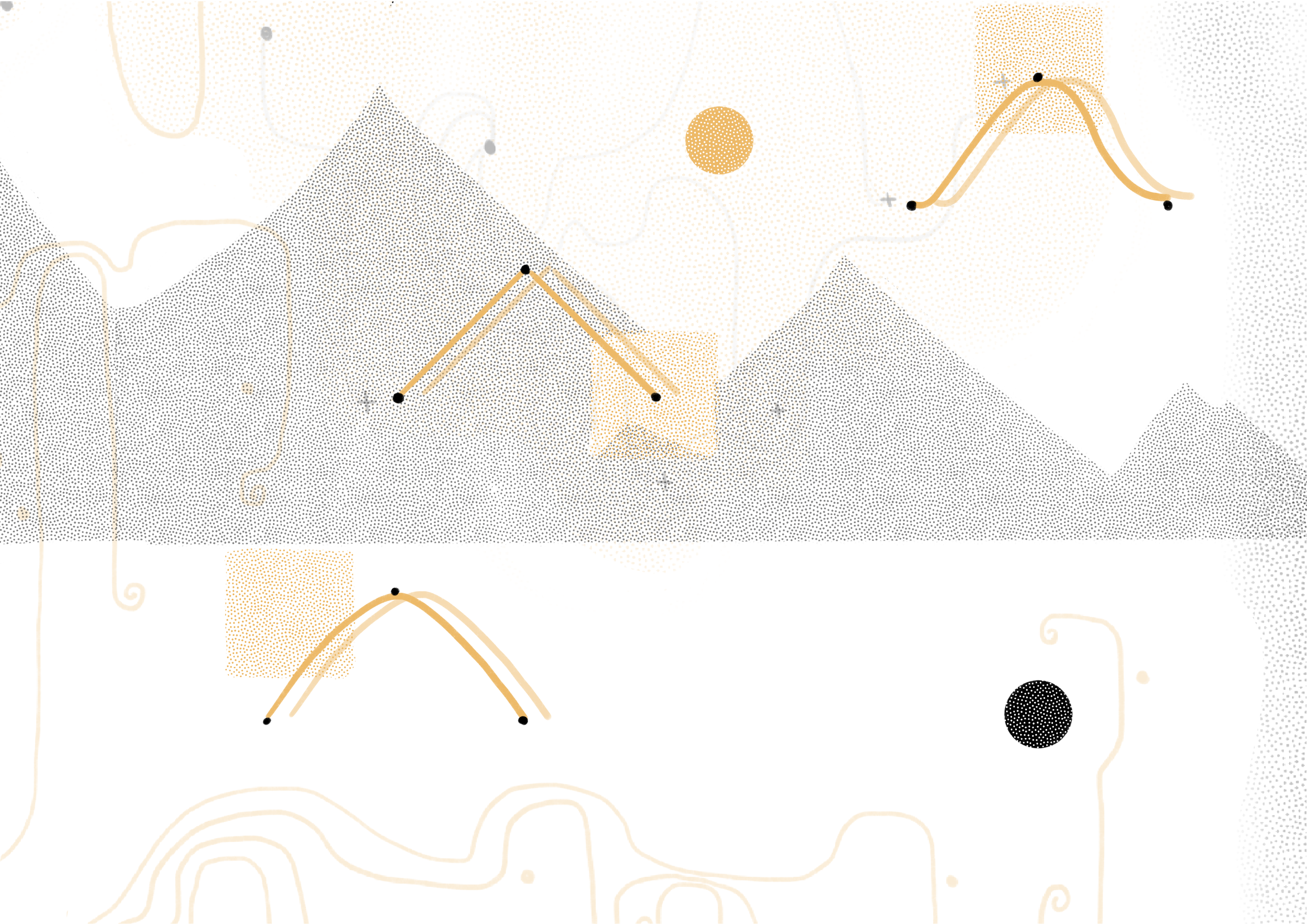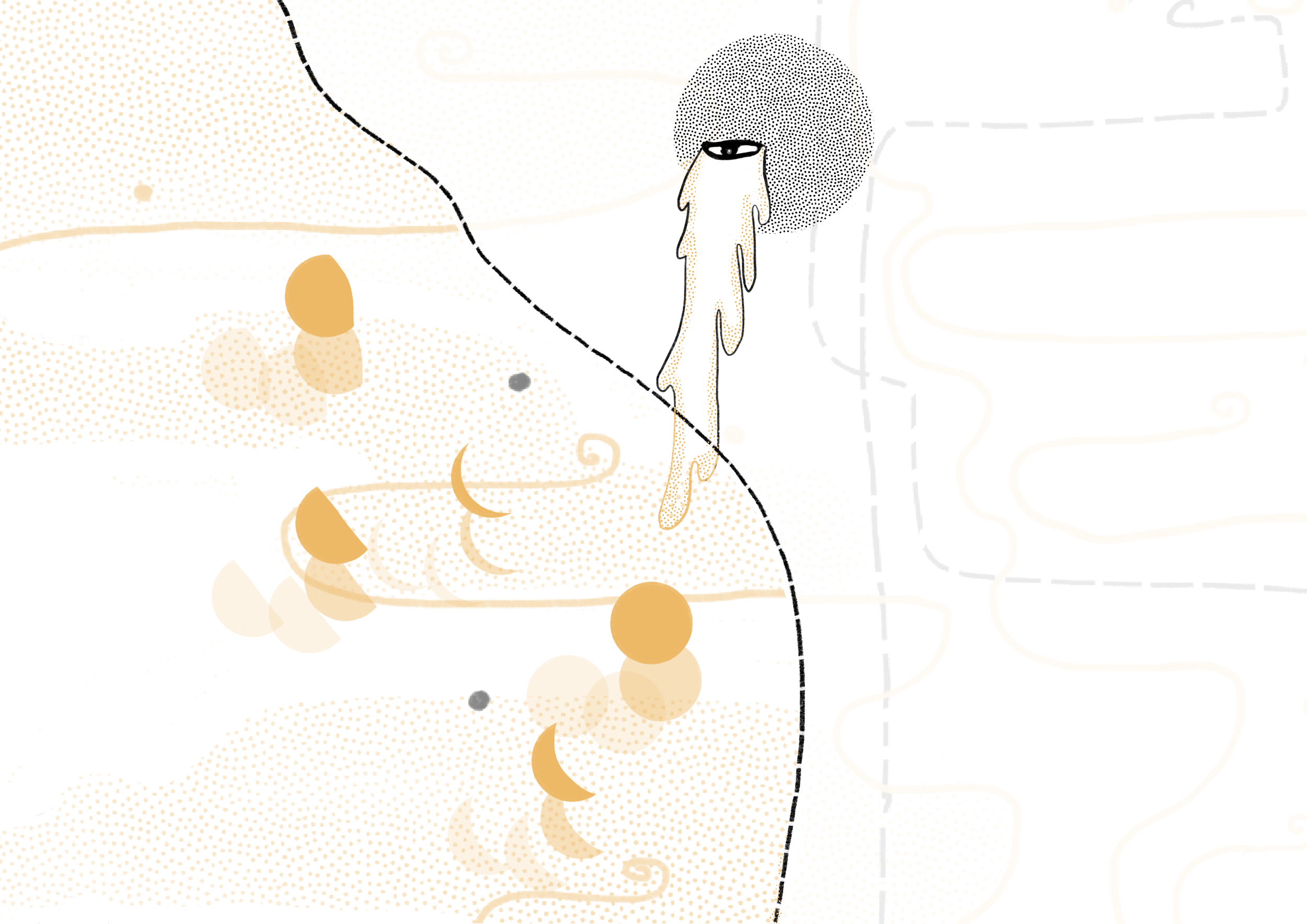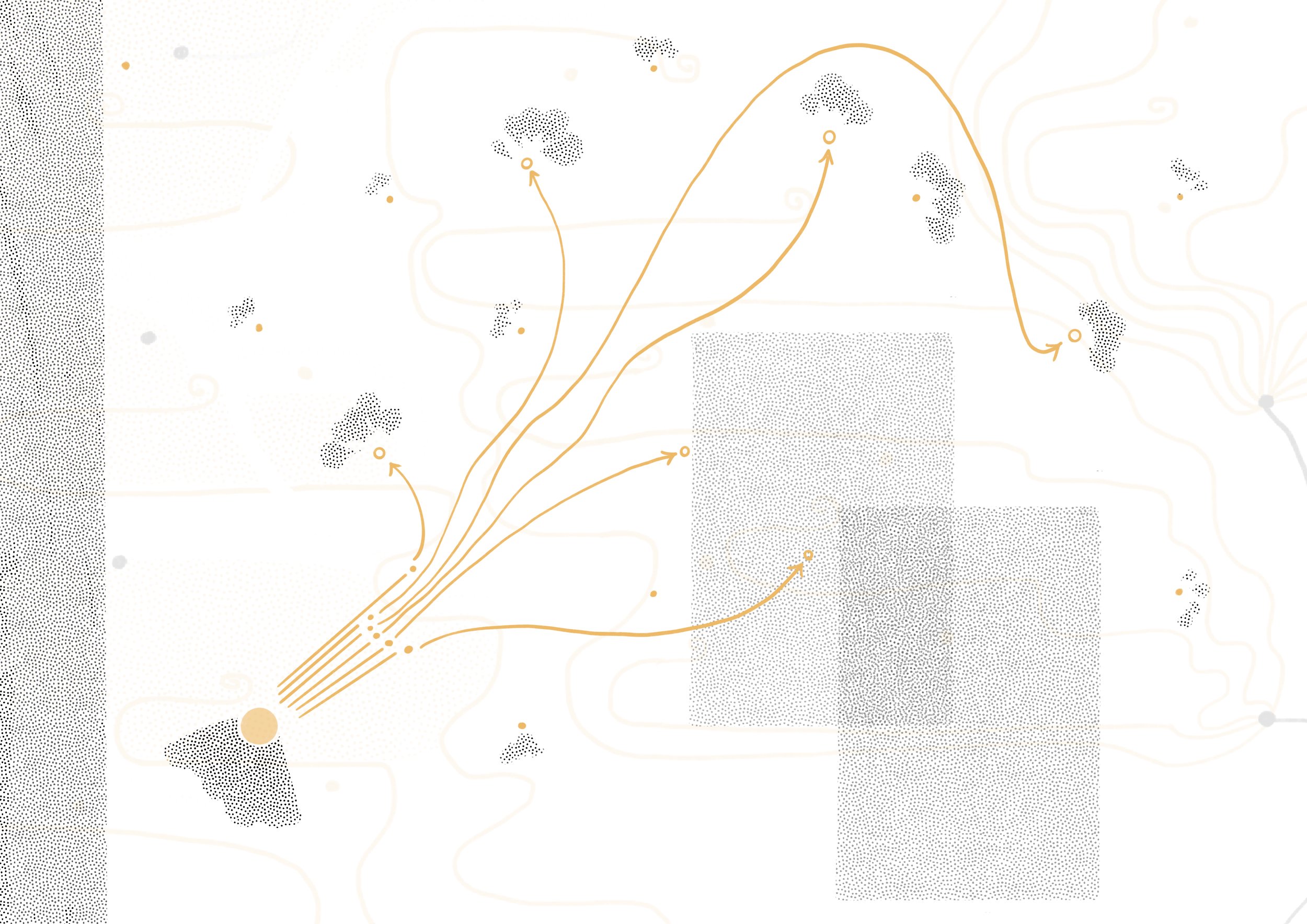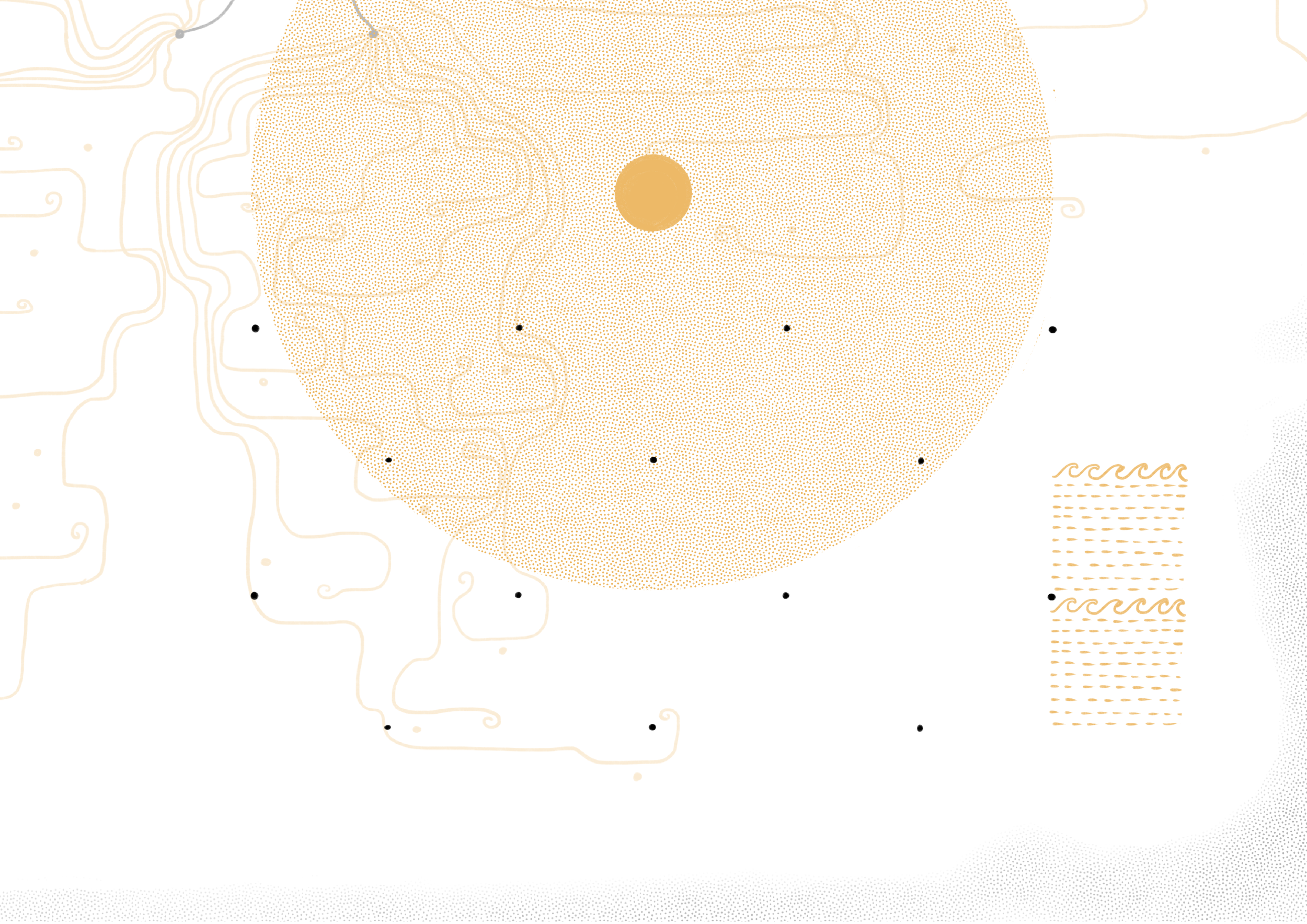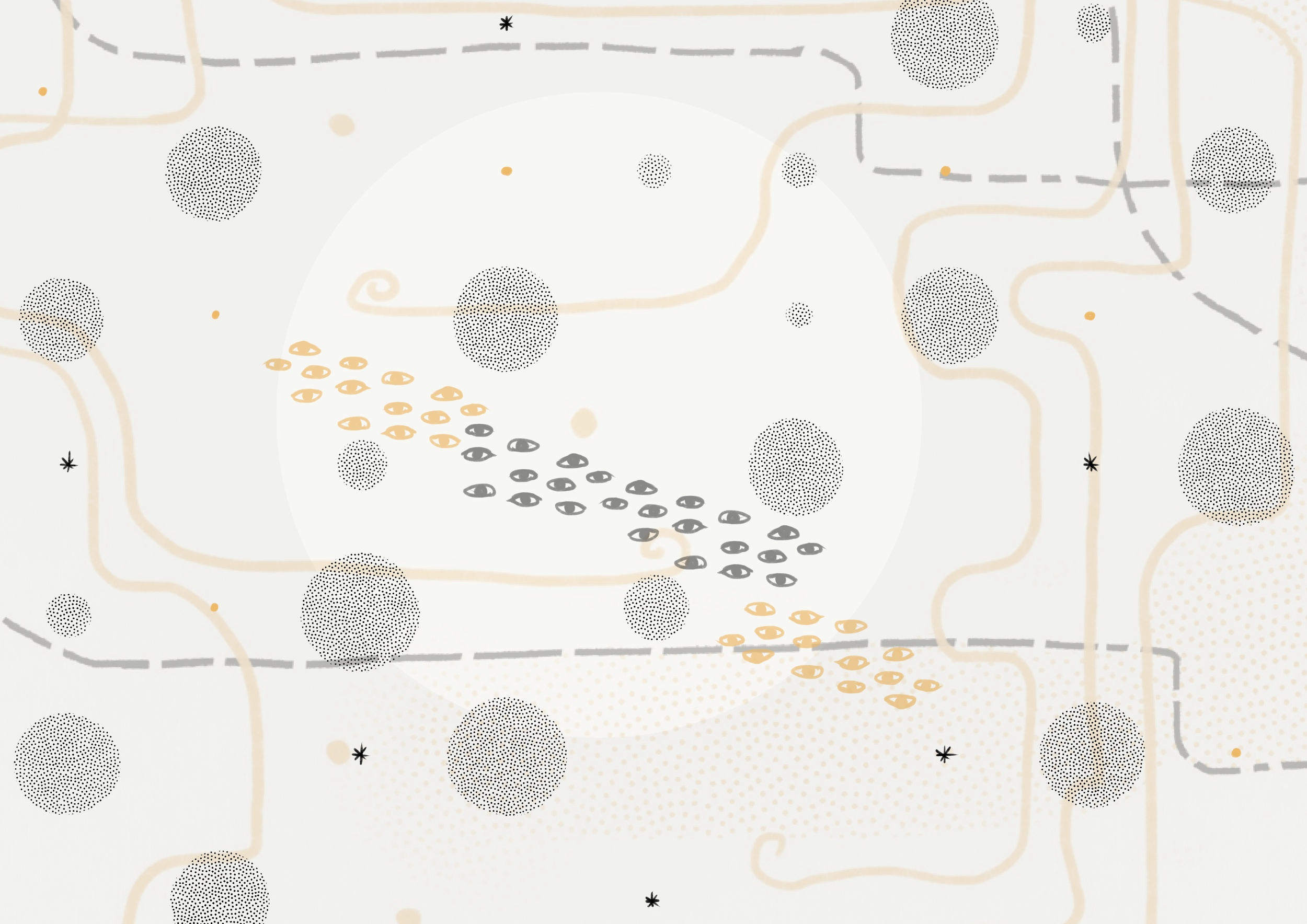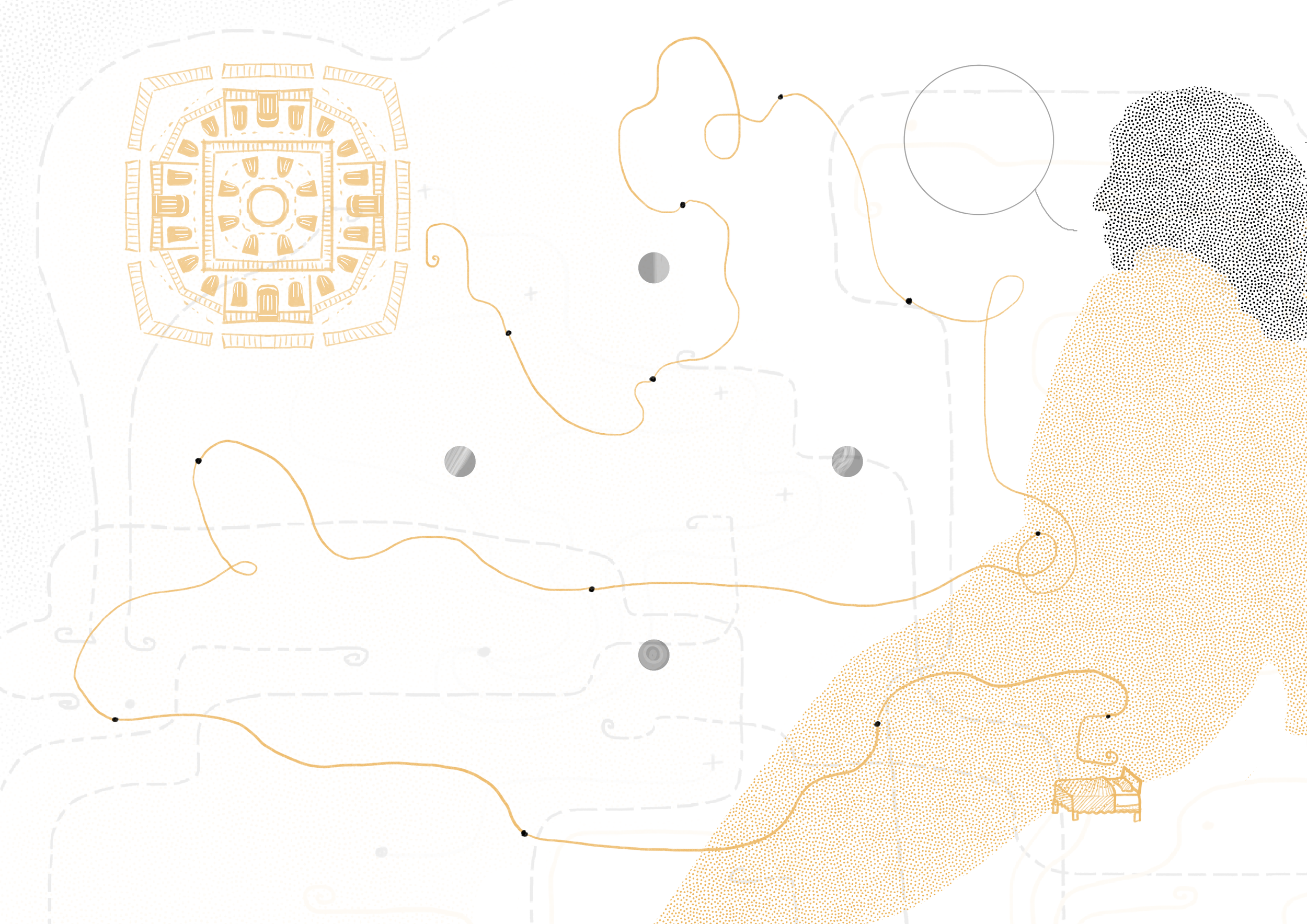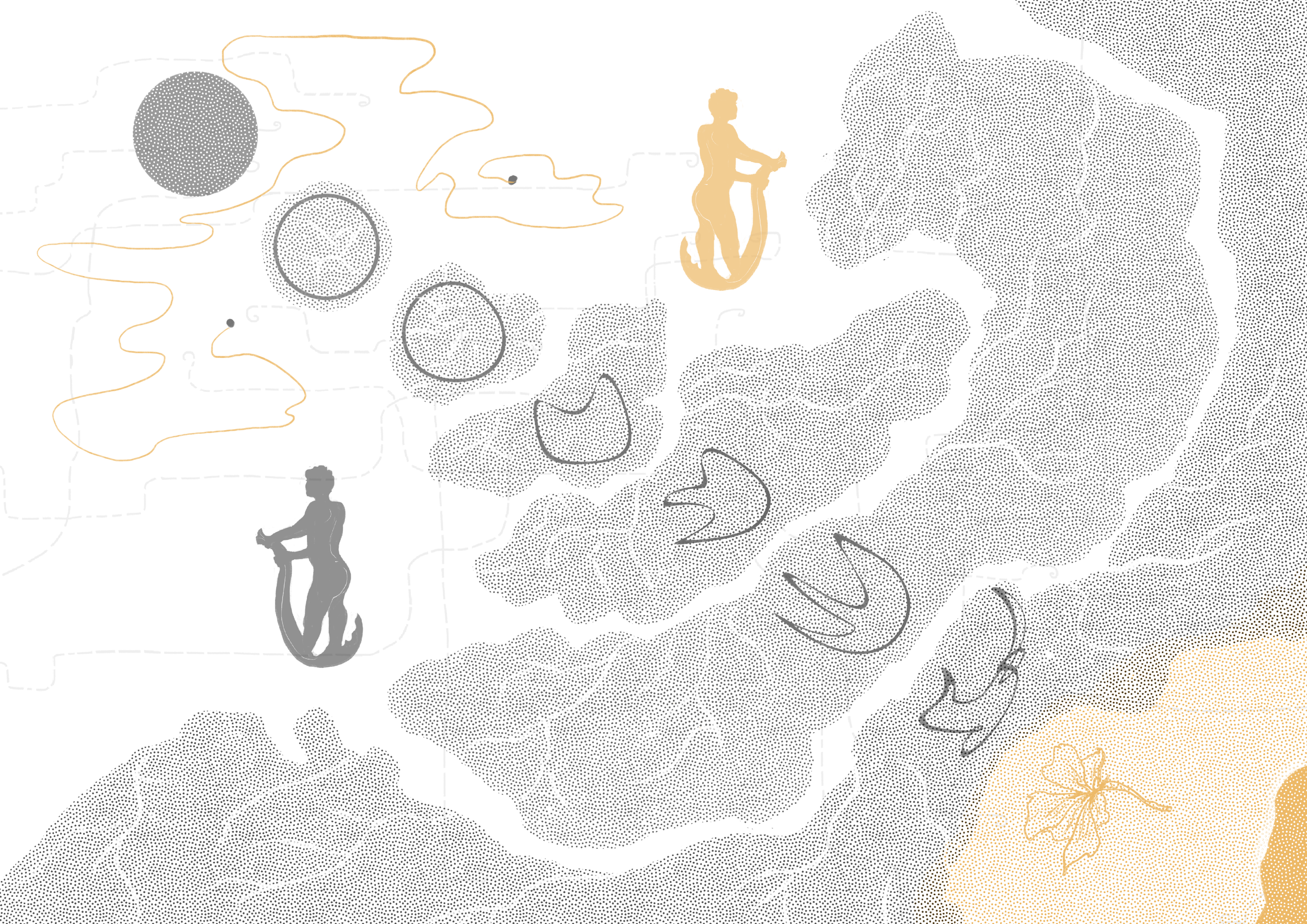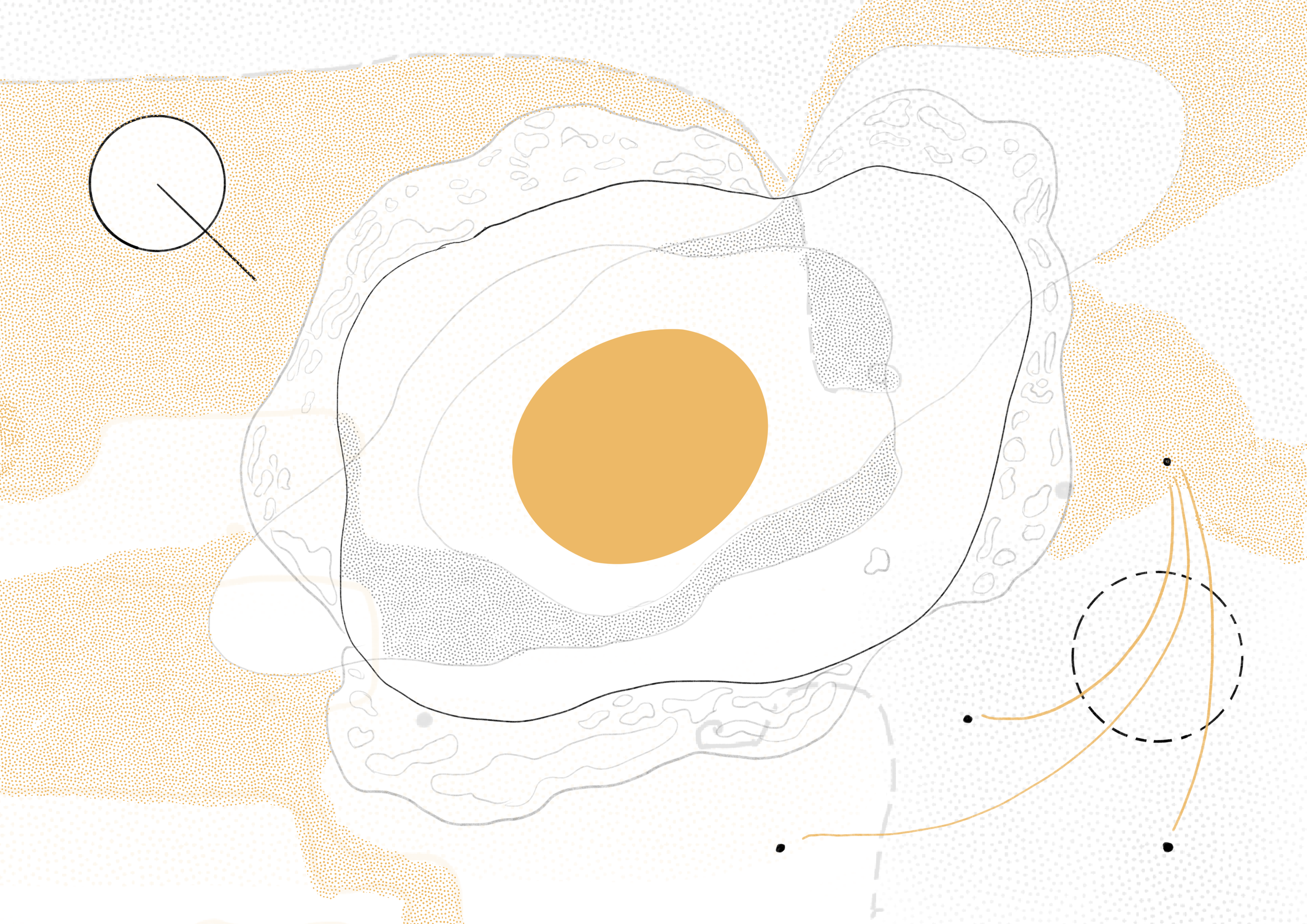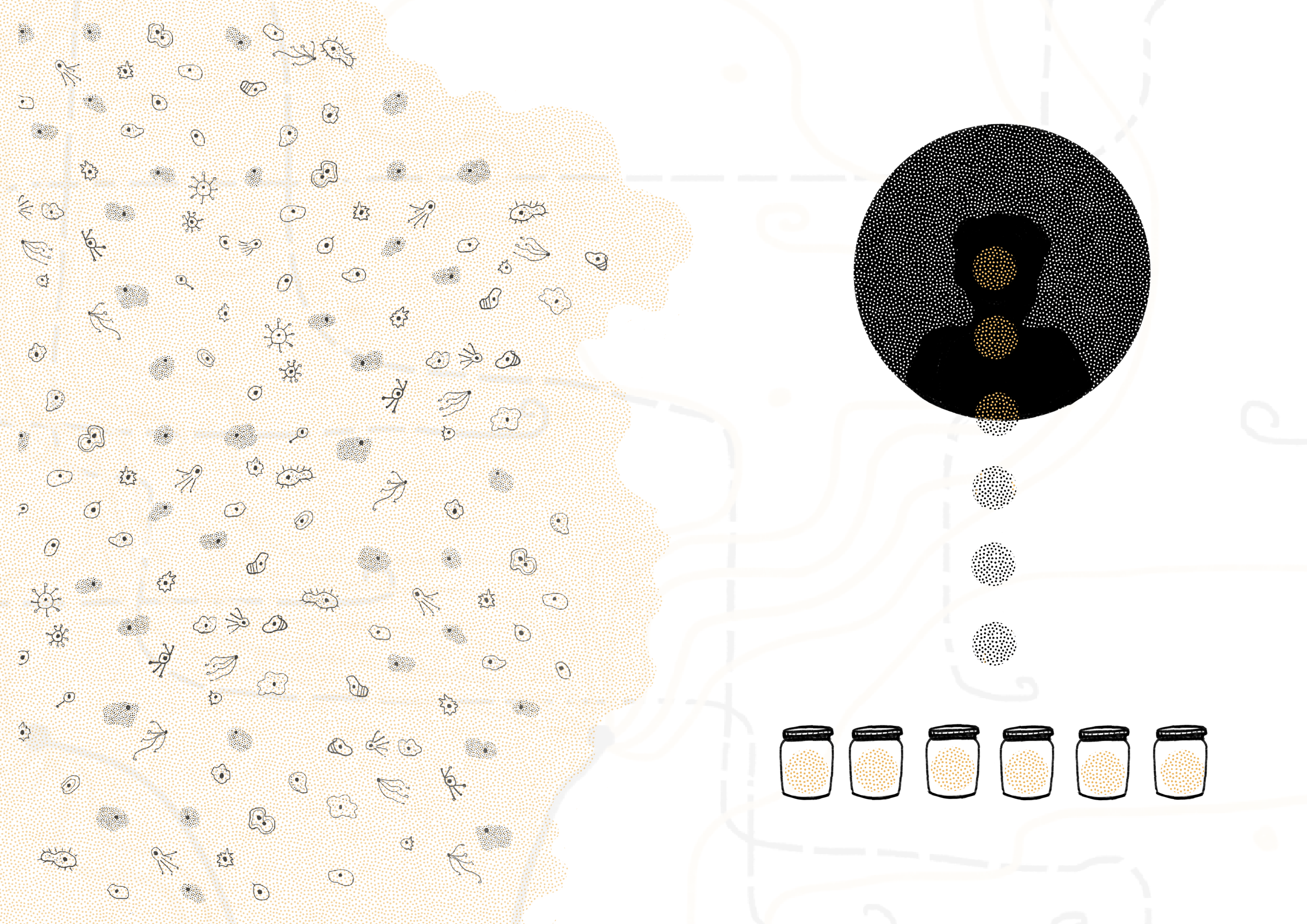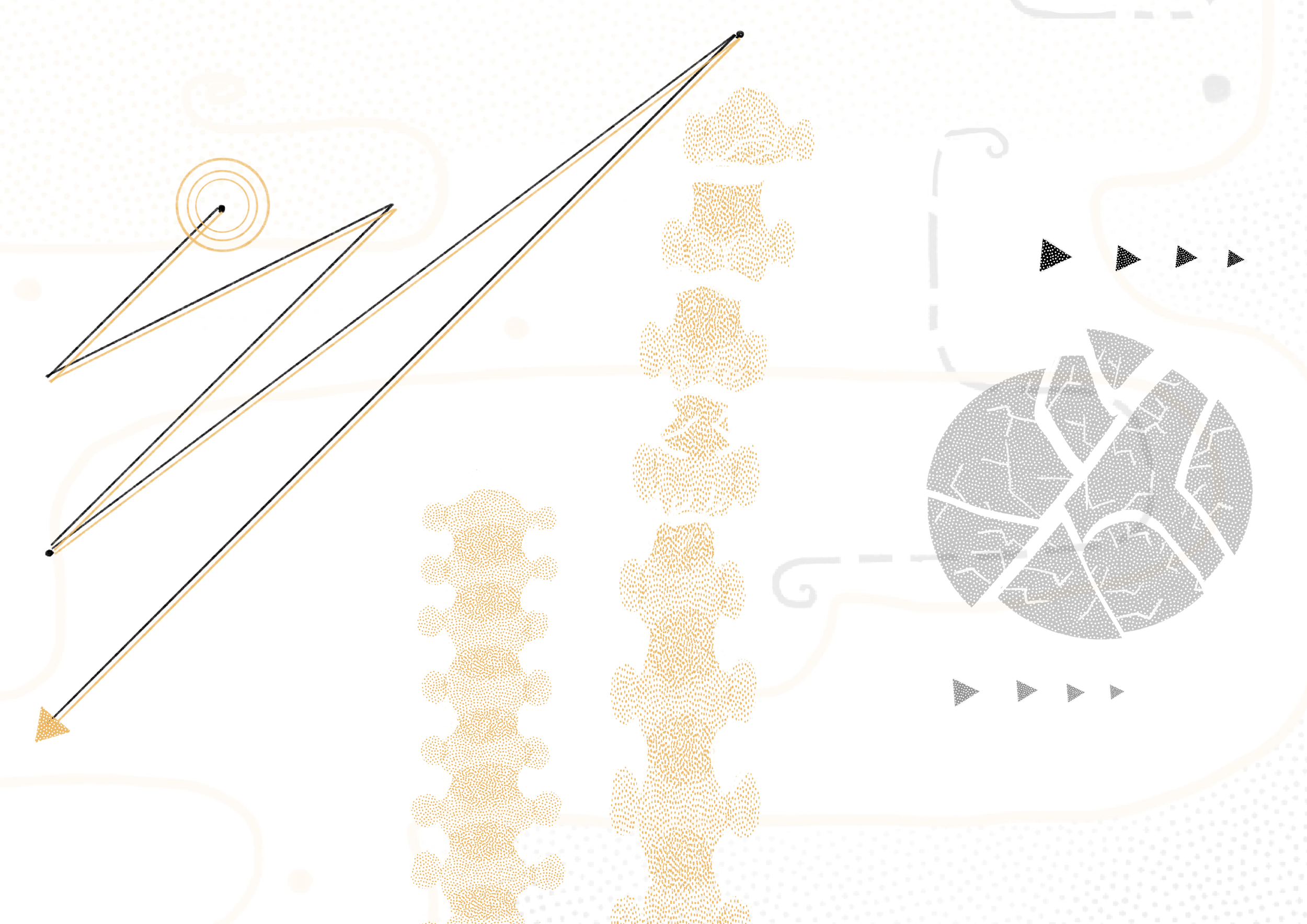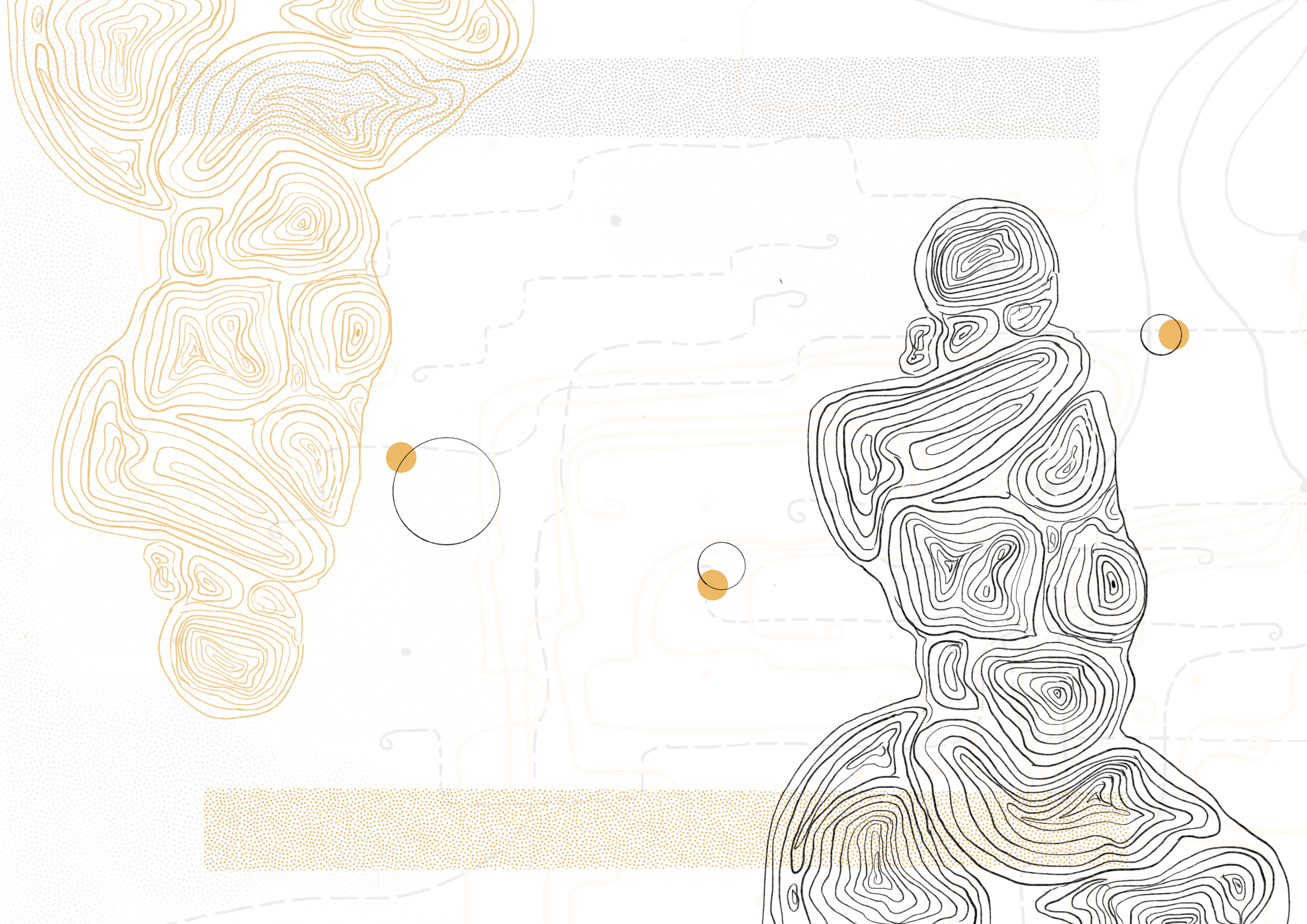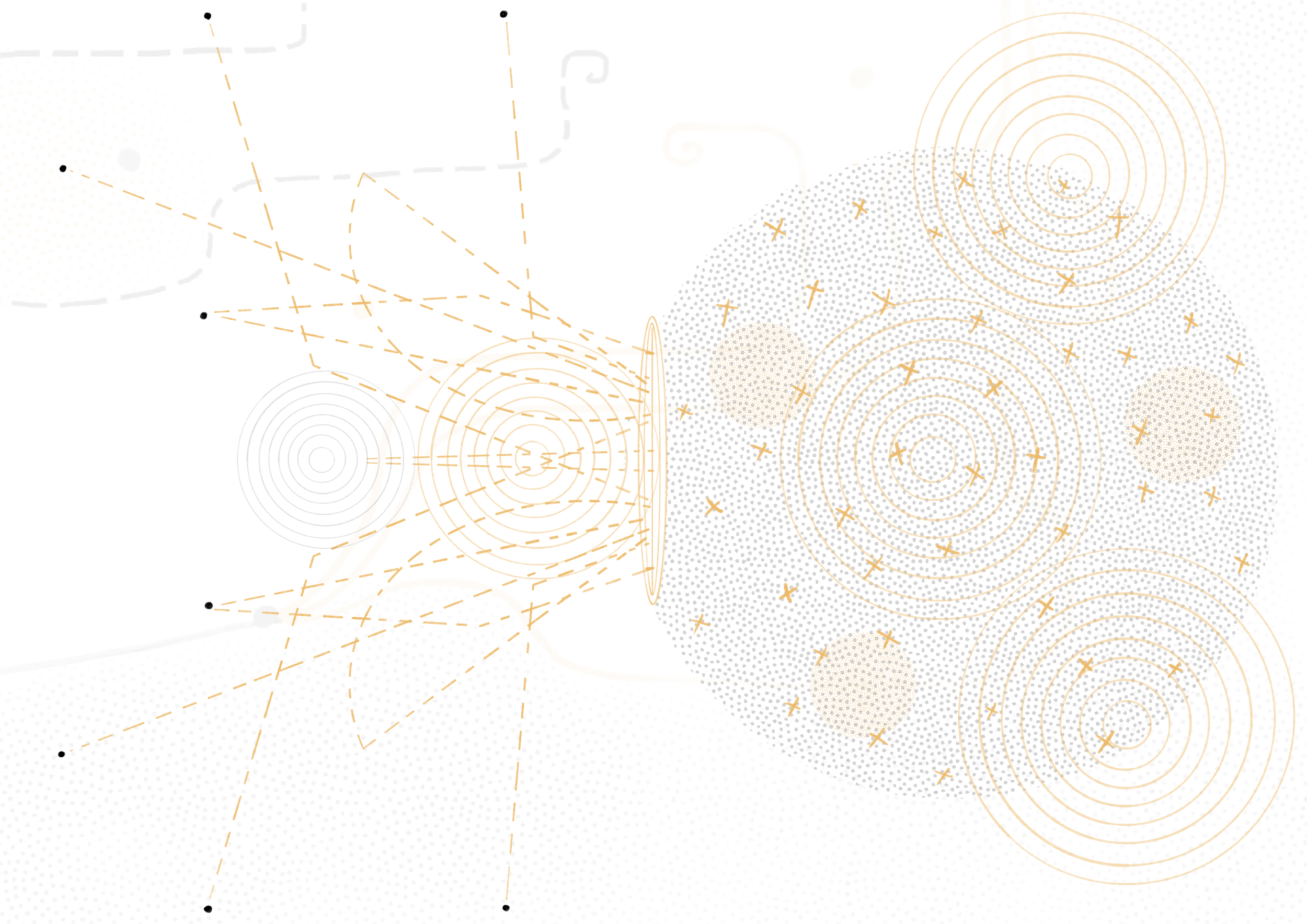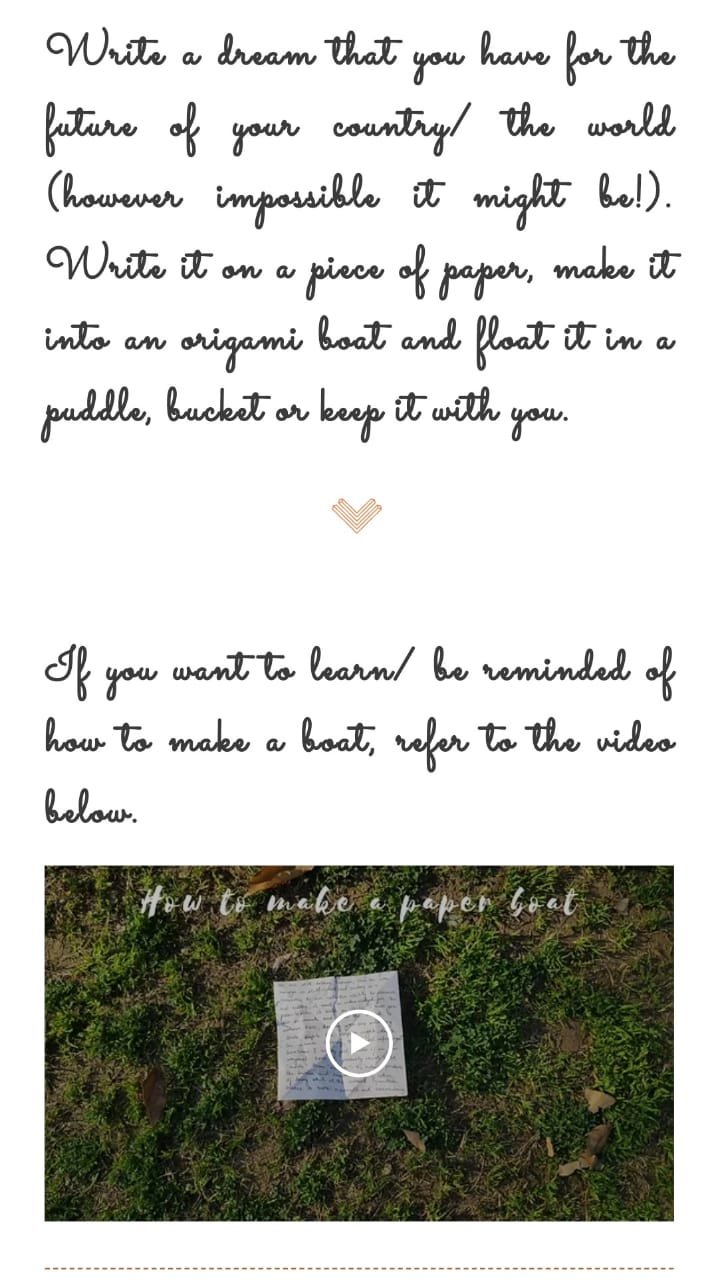Of Sky and Fireflies
Manjari Kaul & Nisha abdulla
The creative seeds for Firefly Women [1] and wepushthesky [2] were laid around the same time and we were thrilled to discover the various ways in which these two projects intersected. Both the solo performance projects are responses to the brazen emboldening of Hindutva voices, the clearing of Anti-CAA-NRC-NPR [3] protest sites all over the country and targeted violence against Muslims. The performances retrace moments of solidarity from the multiple Shaheen Baghs across the country and recognise their continued reverberation through our bodies in urgent yet nourishing ways. Both the pieces use documentary material to carry forth imaginations of a more equitable world.
wepushthesky frames community history and personal stories of the writer in the context of life under a Fascist regime. It talks of both heartbreaks of old bonds that fractured under the weight of political polarisation as well as new friendships that provide the relief of belonging. It seeks to name an alternative politics of vulnerability and tenderness that is rooted in a secular ethos; one that is guided by a need to collectively heal from the scars inflicted by the present political moment. wepushthesky currently exists as a website-based audio play.
Firefly Women is a website-based digital theatre piece. It explores ideas of feminist utopia, such as Rokeya Sakhawat Hossain's Sultana's Dream, against the background of letters written from jail by Devangana Kalita and Natasha Narwal during their incarceration under a draconian law. Through these letters, the piece attempts to find inroads into feminist solidarity, resilience and hope.
In the making of these performances we played formal roles in each other’s processes, allowing us to recognise intersecting themes and devices [4]. In this essay, Of Sky and Fireflies, we analyse some of these mutualities - symbiotic, relational connections. The structure of this essay is that of annotated notes for excerpts from the two pieces; excerpts that thematically and/or formally resonate with each other. Through these annotations we attempt to trace a jugalbandi [5], an interconnectedness between our respective works.
Tangentially, one of our intentions behind writing this piece is to challenge the constraints imposed by the arts ecosystem. These systems often pitch artists against each other where they are competing, as individuals, for limited resources available through grants and arts festivals. This creates a paucity of spaces that allow for the sharing and exchange of ideas between artists, especially, as they develop solo works. The Covid-19 pandemic only deepened some of these faultlines. In writing this essay, we attempt to break out of the isolation induced by existing systems, the pandemic and an increasingly fraught political divide.
Stories and Songs of Resistance
“The beginning of this month has been rather exciting. Jail No. 6, immersed in the preparations for celebrating March 8 :) We had put in an application to mark the day as had been the practice earlier. The hustle and bustle that marked the lead-up to the day produced a nice dynamism here, like things were happening. For those imprisoned for many, many years, a sign of a gradual return to “normalcy,” a breaking of the stasis and monotony that corona had brought even inside prison—maybe the burden of kato-ing [biding] time was to be eased a little… Sharing the history of this day with sathis eager to know; the joy of practice sessions as one saw people emerge and transform, create and enter character, fumbling lines to confident dialogue deliveries; working with one another and collectively owning the natak [a play]; learning together the lyrics of “Tod tod ke.” :) … Fatima Sheikh was played by Natata (as the kids lovingly call her).”
- Excerpt from a letter by Devangana Kalita
In wepushthesky, the Mappila Ramayan [6] is used to cast a fresh look at the violent politicization of the myth of Ram over the last three decades. A folk tradition of the Mappila community in Kerala, the Mappila Ramayan narrates the epic with Lama and Lavana - both Malabar princes who live and battle on the Malabar coast. It provides sharp social commentary on power, gender, and justice using the Mappila dialect and specifics rooted in the Mappila milieu. The narrator discovers and sings verses from the Mappila Ramayan and imagines her family in prominent roles - should a play be staged on the same. The verses also provide a break in the storytelling in monologue form - with humorous verses that draw the audience in with a (subtextual) invitation to personalise the myth for themselves.
In Firefly Women, the prison inmates discover Savitribai Phule’s resistance to caste supremacy and perform a play for their Women’s Day program with moments from her life. Many of the inmates live doubly marginalised lives due to their caste identity. The process of making the play allows them to learn reading and writing, to nurture friendships in prison, and to acknowledge the active dreaming that is contained within prison walls. This segment of the piece harks back to our feminist predecessors on whose labour we build the future, whose legacies we must find ways to commemorate.
The Mappila Ramayan and Savitribai Phule’s legacy of dissent become powerful instances of the margins pushing against the homogenised centre. These stories jostle for space in the mainstream, but are essential to destroying a monolithic idea of Indian history and mythology. They become the articulation of a political resistance that is pluralistic in nature; one that questions the singular patriarchal upper caste Hindu narrative. The reclaiming of these stories provides the relief of belonging-ness to those at the margins, and thus attempts to loosen the stranglehold of fear and anger.
Memory and Imagined Secular Feminist Futures
“A most extraordinary thing happened in Jail yesterday evening. I had tried to explain to them – how a rainbow looks like, and what its colours are. We only had one broken piece of red crayon with us. So we found the rest of the colours from old newspapers and tore them out to make our rainbow collage. The children were most delighted and curious, but also confused, “par aasman mein itne saare rang kaise ho sakte hain?”, the eldest one kept asking.
And then all of a sudden, out of nowhere, it happened, happened yesterday evening. The skies were unusually blue and clear, the evening light soft and teasing, the sun peaking (sic) in and out through the clouds, and a very light drizzle. I had a moment of anticipation, but feel scared to hope.
The eldest one screamed, ‘aunty, dekho, RAINBOW!’
So yeah, an actual rainbow in the sky…It was time to be locked inside soon, as if almost knowing it, the rainbow faded away. The children became anxious, “aunty, woh kaha gaya?’, ‘Woh kyu chala gaya?’, ‘Kal aayega kya?’, ‘kyun hamesha nahi rehta?” There was a barrage of questions I could barely satisfactorily answer."
- Excerpt from a letter by Devangana Kalita
The excerpt from wepushthesky appears towards the beginning of the piece as the narrator is recalling her relationship with her childhood friend. The recitation of holy verses is played like a competitive game by children belonging to different faiths and is remembered by the adult body as a safe ritual. As the narrator grows up, she is hyper-aware of the complexity of being a religious minority in a country struggling under the weight of communal violence. Yet the evocation of this childhood memory attempts to rescue the collective memory of the secular — a secular under assault from erasure and falsification by the State. The memory unpacks a shared past not just through the lens of nostalgia and lost innocence, but also puts forth hope for compassionate dialogue toward communal harmony.
The excerpt from Firefly Women describes Natasha and Devangana’s conversations with the children in the jail. The children are full of innocent questions about rainbows and these interactions symbolise joyous moments suspended in time within the drudgery of jail life. For Natasha and Devangana, these are also lighter moments that provide a glimmer of hope, ephemeral though it may have been. The inner world of children in these performances is used to symbolize the promise of a better future, the lasting vision of the coming of a revolution. The children anthropomorphize the rainbow and are inquisitive about its appearance and disappearance – reminding us that visions of utopia must always be accompanied by questions and curiosity.
Breath, Body and Listening
wepushthesky unfolds as a conversation between performer and listener, without the violent imagery that often accompanies media reportage of protests. It proposes that the listening body, which invites another’s reality into one’s own body, is an active site of political resistance. The listening body is an antidote to the algorithm-led, hyperpolarized times we live in. In wepushthesky, the listening audience member is invited to become part of the circle of resisting bodies. An intimacy is evoked between the performer and the audience as a palpable, ever-growing organism.
Firefly Women: Chapter 3 (Un-caging) encapsulates the monotony of prison life – the tyranny of the fascist State that chips away methodically at the ability to imagine a world beyond itself. The screen is set up like a surveillance camera watching and listening in to every movement and breath of the caged one. The song, Hum Dekhenge (we shall witness) [7] comes in as a glitch in the matrix. The sounds of the song of resistance rises as the performer stands up to confront the gaze of the camera that attempts to control their every thought and action performed in repeated machine-like mode. The refusal of the body to be tamed to the tunes of the oppressive regime is performed through the confrontational gaze of the performer. This happens when the performer refuses to perform the monotonous task and instead stands up to look at the camera directly. Here the individual body that resists becomes part of a collective force – one that powerfully counters the attempts to erase our individual lives and hyphenated identities. Breath and movement come together to establish the performer’s body as a resisting, secular site. Resistance is articulated through the performer’s breath as it outlasts and finds cracks in the gaze of the oppressive regime.
There are of course days when incarceration becomes too much, just your barrack, your ward and the park outside, the visceral physical limits day after day.
… During these days, one of the things that gave me the most strength was singing songs of resistance to myself—the unfinished broken lines that I could remember, singing them repeatedly and endlessly through the long days and nights, sometimes quiveringly, sometimes confidently, sometimes even a bit too loudly for the silent night, as so many memories flashed through, giving strength, giving power, reassuring. Each world felt loaded with so much meaning and so much history.
“Niddar, azaad ho jayegi woh to naya zamana layegi”
- Excerpt from a letter by Devangana Kalita
Friendship Bingo from wepushthesky, one of two prompts that the audience is invited to respond to
IMAGE DESCRIPTION
White text on black background in a bingo board format. The text in each square reads as follows:
a friend who makes space for all parts of you, a friend who feels like home - messy but you belong with them, a friend you wish to go back to and say sorry to, a friend who you would share this play with, a friend whose life is different from yours, a friend you wish would say sorry to you, a friend who holds your broken heart and helps you heal, a friend with whom you can sit in silence.
One of the prompts from Firefly Women, which the audience is invited to respond to after watching Chapter ___.
IMAGE DESCRIPTION
Black cursive text on white background with the text: “Write a dream that you have for the future (however impossible it might be!). Write it on a piece of paper, make it into an origami boat and float it in a puddle/ bucket or keep it with you. If you want to learn / be reminded of how to make a boat, refer to the video below.”
Under the text is a video of a square white piece of paper with text on it, placed on green grass. The title of the video says, “how to make a paper boat”.
Resistance is often understood as something that resides in protest sites only and in particular events that overthrow or subvert the status quo in society. Through the two pieces, we invite the audience to witness and experience resistance in the everyday - through memory keeping, intentional relationships and collective dreaming.
At the end of wepushthesky the audience is invited, through the game of friendship bingo, to reflect on friendships as a force of growth and nourishment. It becomes a medium through which one encounters deep listening to differences and a space to navigate difficult questions around identity, culture and belonging.
In Firefly Women the audience is similarly invited to share what hope means to them and to imagine a world that is more equitable. This invitation recognises imagination and the holding of hope as actions that are most feared by fascist regimes. An invitation to the audience to share a thread of hope becomes a participatory action-ing of political resistance in itself. It forges a sense of solidarity and connection in spite of the anonymity of the digital medium.
*
Both wepushtheky and Firefly Women were conceptualized in response to pandemic induced isolation - seeking to create alternate ways of reaching out to our audiences in the absence of the familiar in-person model. Furthermore, when the lockdown resulted in a clearing of the anti-CAA protest sites, the need for holding space for feminist secular solidarities gave us further impetus toward developing our respective works. In their invitation to listen, share, and reflect, the two solo pieces put forth a political task for the audience – that of crafting active resistance to the violence perpetrated by the regime in power. Through this reflective piece here, we attempt to recognize that the doing of political theatre includes participation in a continuum. A continuum that seeks to be in conversation with and to reflect on each other’s processes of making work. It seeks to build networks of solidarity, to find connection through echoes of our own ideas and concerns in another performing body. We form reflective surfaces for each other’s work; a sisterhood of witnessing. We play off each other’s impulses, akin to call-and-response in a protest song.
[1] Firefly Women is a solo Digital Theatre piece in 7 parts, created with support from Reframe Arts under their Genderalities 2.0 Grant, premiered in 2022. The full work can be viewed here: www.fireflywomen.in
[2] wepushthesky is a website based audio play that opened in July 2022. The full work can be experienced at www.wepushthesky.in
[3] CAA stands for Citizenship (Amendment) Act, 2019. NRC stands for National Register of Citizens. NPR stands for National Population Register. Additional reading here .
[4] Both of us were participants in a workshop where the themes and form of wepushthesky originated, and Nisha is the dramaturg for the Digital version of Firefly Women.
[5] A jugalbandi is a term used in Hindustani and Carnatic music that features a duet of two solo musicians. The word jugalbandi literally means "entwined twins."
[6] Mapilla Ramayan is an oral folk form practiced by members of the Mappila Muslims of Kerala. Additional reading here.
[7] Hum Dekhenge (We Shall Witness) is a poem by Faiz Ahmed Faiz. Written in 1979, it has since grown in stature as a song of resistance in South Asia.
Manjari Kaul is a queer feminist theatre practitioner and Arts writer. She is a graduate of the DUENDE School of Ensemble Physical Theatre and holds a Master's degree from The School of Arts & Aesthetics, Jawaharlal Nehru University. She is interested in exploring the incongruous and disruptive in live performance; seeking possibilities for intersections and solidarities. Gender, sexuality and memory expressed through a personally political lens are leitmotifs in her work. Her website is www.manjarikaul.com.
Nisha Abdulla is a Bangalore based theatremaker, performer, and educator. As the Artistic Director of Qabila, her anti-oppressive arts practice places care and curiosity at the core of the creative process. Nisha centers new writing and the dissenting imagination in her work, primarily exploring the politics of identity and belonging. For more on her work linktr.ee/nishaabdulla.
